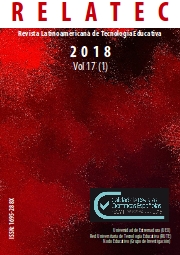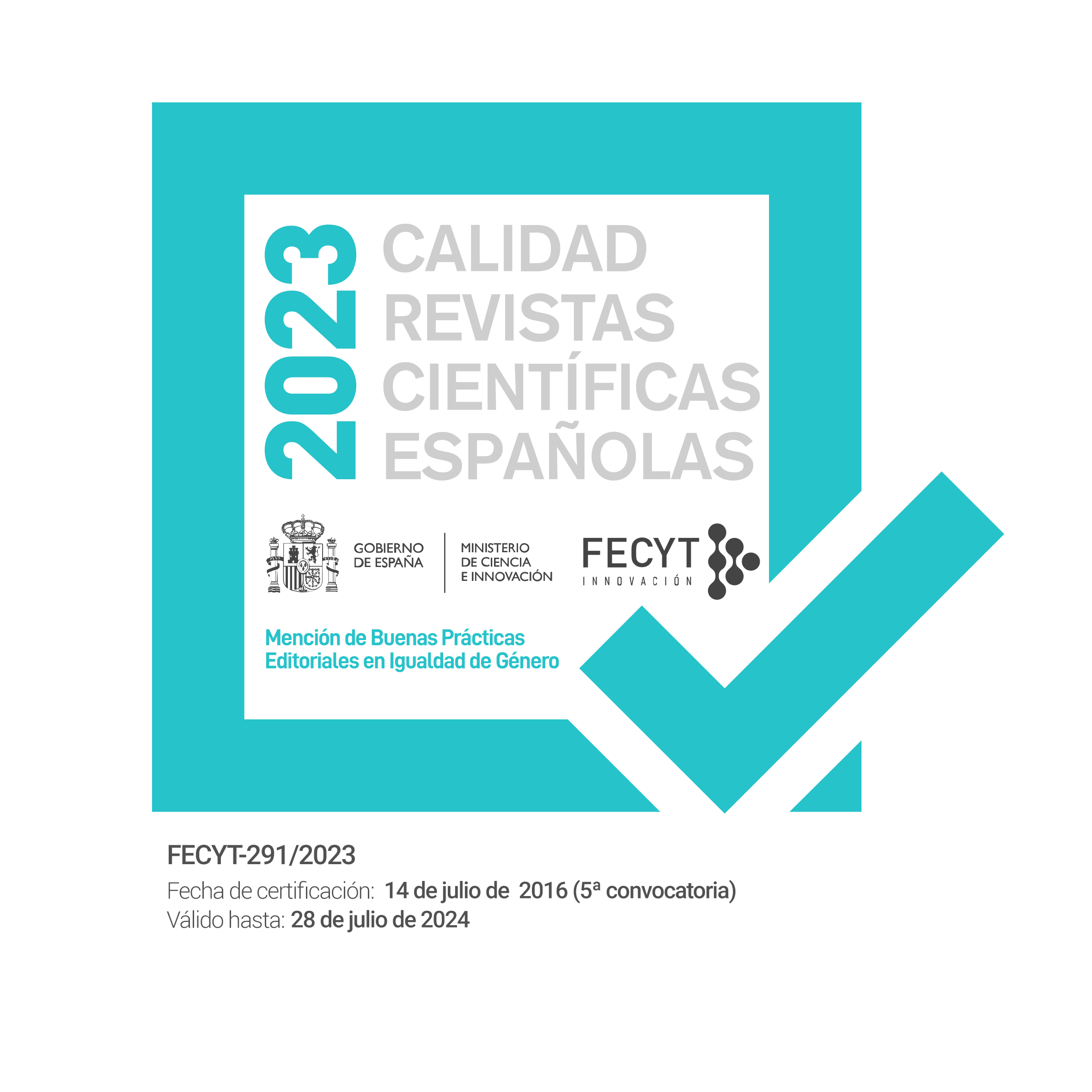Imprinted viewing comprehension questions: a proposal for second language acquisition
DOI:
https://doi.org/10.17398/1695-288X.17.1.105Keywords:
listening comprehension, second language instruction, multimedia instruction, educational innovation, adult education, mixed methods researchAbstract
Audiovisual comprehension activities are complex, especially in a foreign language. On the one hand, there is a conflict of visual attention between viewing a video and completing a written task simultaneously. On the other hand, paying attention to the image, the audio, and the activity at the same time can lead to working memory overload. This paper describes an innovative proposal that can help limit this complexity in the fields of teaching and testing second languages: the use of embedded comprehension questions in the form of subtitles and synchronized with the relevant fragments. The proposal is a result of a doctoral dissertation in which a multiphase mixed methods design was employed. Participants were researchers in teaching Spanish as a Second Language (SSL), Spanish linguistics and/or the use of educational technologies, and SSL university teachers and students. Overall, informants had positive opinions about this methodology. Quasi-experimental studies revealed that imprinted questions did not have a statistically significant effect on SSL students’ audiovisual comprehension test performance. However, imprinted questions did increase the amount of time that test-takers watched the video in a statistically significant way. The latter suggests that this technique reduces the conflict of visual attention between viewing the video and completing the task.
References
Casañ Núñez, J. C. (2009). Didáctica de las grabaciones audiovisuales para desarrollar la comprensión oral en el aula de lenguas extranjeras [tesina de máster]. MarcoELE, 9, 1-142. Recuperado de http://marcoele.com/suplementos/didactica-de-las-grabaciones-audiovisuales
Casañ Núñez, J. C. (2015a). Un marco teórico sobre el uso de preguntas de comprensión audiovisual integradas en el vídeo como subtítulos: un estudio mixto. MarcoELE, 20, 1-45. Recuperado de http://marcoele.com/comprension-audiovisual-y-subtitulos/
Casañ Núñez, J. C. (2015b). Subtitulación de preguntas de comprensión audiovisual: ejemplificación en una secuencia de Ópera prima de Fernando Trueba. Foro de profesores de E/LE, 11, 45-56. Recuperado de https://ojs.uv.es/index.php/foroele/article/view/7095
Casañ Núñez, J. C. (2016a). Actividades de comprensión audiovisual con preguntas integradas en forma de subtítulos: la opinión de catorce estudiantes universitarios de español lengua extranjera. Skopos, 7, 19-38. Recuperado de https://www.uco.es/ucopress/ojs/index.php/skopos/article/view/6896
Casañ Núñez, J. C. (2016b). Desarrollo de una prueba de comprensión audiovisual. MarcoELE, 22, 1-70. Recuperado de http://marcoele.com/descargas/22/casan-prueba_audiovisual.pdf
Casañ Núñez, J. C. (2017a). Diseño y fiabilidad de un cuestionario sobre la comprensión auditiva/audiovisual. Bellaterra Journal of Teaching & Learning Language & Literature, 10(3), 47-65 https://doi.org/10.5565/rev/jtl3.686
Casañ Núñez, J. C. (2017b). Un marco teórico sobre el uso de actividades de comprensión audiovisual con preguntas sobreimpresas en el vídeo y sincronizadas con los fragmentos relevantes para el aprendizaje y la evaluación de lenguas extranjeras: una investigación mixta multifase [Tesis doctoral]. Universitat Politècnica de València. https://doi.org/10.4995/Thesis/10251/90504
Casañ Núñez, J. C. (2017c). Tareas de comprensión audiovisual con preguntas subtituladas: valoraciones de cinco profesores universitarios de espanol como lengua extranjera. E-JournALL, EuroAmerican Journal of Applied Linguistics and Languages, 4(1), 20-39. http://dx.doi.org/10.21283/2376905X.6.77
Casañ Núñez, J. C. (2017d). Testing audiovisual comprehension tasks with questions embedded in videos as subtitles: a pilot multimethod study. The EUROCALL Review, 25(1), 36-60. https://doi.org/10.4995/eurocall.2017.7062
Casañ Núñez, J. C. (2018). The effect of viewing comprehension questions as video captions on test takers' performance and visual behaviour in a Spanish language test. Manuscrito enviado para publicación.
AENOR (2012). Norma UNE 153010: Subtitulado para personas sordas y personas con discapacidad auditiva. Madrid: AENOR.
Alderson, J. C, Clapham, C, y Wall, D. (1995). Language test construction and evaluation. Cambridge, Reino Unido: Cambridge University Press.
Bachmann, C. (2013). Può un font essere uno strumento compensativo per i lettori con dislessia? Gradimento e prestazione nella lettura in Times New Roman e in EasyReading® di alunni dislessici e normolettori della classe quarta primaria. Dislessia, 10 (2), 243-262.
Bachman, L., y Palmer, A. (1996). Language testing in practice. Oxford, Reino Unido: Oxford University Press.
Baddeley, A. (2000). The episodic buffer: a new component of working memory? Trends in Cognitive Sciences, 4(11), 417-423. https://doi.org/10.1016/S1364-6613(00)01538-2
Bordón, T. (2006). La evaluación de la lengua en el marco de E/L2: bases y procedimientos. Madrid, España: Arco/Libros.
Bright, K, y G. Cook (2010). The colour, light and contrast manual: Designing and managing inclusive built environments. Oxford, Reino Unido: Wiley-Blackwell.
Brown, J. D. (2001). Using surveys in language programs. Cambridge, Reino Unido: Cambridge University Press.
Buck, G. (2001). Assessing Listening. Cambrige, Reino Unido: Cambridge University Press.
Chang, A. C.-S., y Read, J. (2006). The effects of listening support on the listening performance of EFL learners. TESOL Quarterly, 40(2), 375-397. https://doi.org/10.2307/40264527
Coniam, D. (2001). The use of audio or video comprehension as an assessment instrument in the certification of English language teachers: a case study. System, 29(1), 1-14. https://doi.org/10.1016/S0346-251X(00)00057-9
Consejo de Europa (2001). Common European framework of reference for languages: Learning, teaching and assessment. Cambridge, Reino Unido: Cambridge University Press. Recuperado de http://www.coe.int/t/dg4/linguistic/source/framework_en.pdf
Cowan, N. (2001). The magical number 4 in short-term memory: A reconsideration of mental storage capacity. Behavioral and Brain Sciences, 24(1), 87-114. https://doi.org/10.1017/S0140525X01003922
Creswell, J. W. (2012). Educational research: Planning, conducting, and evaluating quantitative and qualitative research. Londres, Reino Unido: Pearson.
Creswell, J. W. (2014). Research design: Qualitative, quantitative, and mixed methods approaches (4.ª ed.). Thousand Oaks, California, Estados Unidos: Sage Publications.
Creswell, J. W., y Plano Clark, Vicki L. (2011). Designing and conducting mixed methods research (3.ª ed.). Londres, Reino Unido: Sage Publications.
Díaz Cintas, J. (2012). Los subtítulos y la subtitulación en la clase de lengua extranjera. Abehache, Revista da Associação Brasileira de Hispanistas, 2(3). 95-114. Recuperado de http://www.hispanistas.org.br/arquivos/revistas/sumario/revista3/95-114.pdf
Díaz Cintas, J. (2013). Subtitling: Theory, practice and research. En C. Millán, y F. Bartrina (eds.), The Routledge Handbook of Translation Studies (pp. 273-287). Londres, Reino Unido: Routledge.
Díaz Cintas, J., y Remael, A. (2007). Audiovisual translation: Subtitling. Manchester, Reino Unido: St. Jerome Publishing.
Dörnyei, Z. (2007). Research methods in applied linguistics. Oxford, Reino Unido: Oxford University Press.
Field, J. (2008). Listening in the language classroom. Cambridge, Reino Unido: Cambridge University Press.
Flowerdew, J., y Miller, L. (2005). Second language listening. Nueva York, Nueva York, Estados Unidos: Cambridge University Press.
Gernsbacher, M. A. (2015). Video Captions Benefit Everyone. Policy Insights from the Behavioral and Brain Sciences, 2(1), 195-202. https://doi.org/10.1177/2372732215602130
Giovannini, A., Martín Peris, E., Rodríguez, M., y Simón, T. (1996). Profesor en acción 3. Destrezas. Madrid, España: Edelsa.
Greist, J. H., y J. W. Jefferson (2000). Anxiety disorders. En H. H. Goldam (ed.), Review of General Psychiatry (5.ª ed., pp. 284-300). Nueva York, Nueva York, Estados Unidos: McGraw-Hill Medical.
Harris, T. (2003). Listening with Your Eyes: The Importance of Speech-Related Gestures in the Language Classroom. Foreign Language Annals, 36(2), 180-187. https://doi.org/10.1111/j.1944-9720.2003.tb01468.x
Incalcaterra McLoughlin, L. , y Lertola, J. (2014). Audiovisual translation in second language acquisition. Integrating subtitling in the foreign-language curriculum. The Interpreter and Translator Trainer, 8(1), 70-83. https://doi.org/10.1080/1750399X.2014.908558
Lynch, T. (2009). Teaching second language listening. Oxford, Reino Unido: Oxford University Press.
Lynch, T. (2012). Traditional and modern skills. Introduction. En M. Eisenmann y T. Summer (eds.), Basic issues in EFL teaching and learning (pp. 69-81). Heidelberg, Alemania: Winter.
Martí Ferriol, J. L. (2004). Subtitle reading speed: A new tool for its estimation. Babel, 59(4), 406-420. https://doi.org/10.1075/babel.59.4.02mar
Martín Peris, E. (2007). La didáctica de la comprensión auditiva. MarcoELE, 5. Recuperado de: http://marcoele.com/la-didactica-de-la-comprension-auditiva/ (Trabajo original publicado en 1991)
Mendelsohn, D. J. (1994). Learning to listen: A strategy based approach for the second language learner. Carlsbad, California, Estados Unidos: Dominie Press.
Miller, G. A. (1956). The magical number seven, plus or minus two: some limits on our capacity for processing information. Psychological Review, 63(2), 81-97. https://doi.org/10.1037/h0043158
Miquel Iriarte, M. (2017). The reception of subtitling for the deaf and hard of hearing: viewers' hearing and communication profile & subtitling speed of exposure [Tesis doctoral]. Universitat Autònoma de Barcelona. Recuperado de http://www.tdx.cat/handle/10803/403811
Morse, J. M. (2003). Principles of mixed methods and multimethod research design. En A. Tashakkori y C. Teddlie (eds.), Handbook of mixed methods in social and behavioral research (pp. 189-208). Thousand Oaks, California, Estados Unidos: Sage.
Ockey, G. J. (2007). Construct implications of including still image or video in computer-based listening tests. Language Testing, 24(4), 517-537. https://doi.org/10.1177/0265532207080771
Porte, G. (2012). Introduction. En G. Porte (ed.), Replication research in applied linguistics (pp. 1-17). Cambridge, Reino Unido: Cambridge University Press.
Richards, J. C., y Burns, A. (2012). Tips for teaching listening. Nueva York, Nueva York, Estados Unidos: Pearson Education.
Riley, P. (1979). Viewing comprehension: «L´oeil écoute». Mélanges CRAPEL, 10, 80-95. Recuperado de http://www.atilf.fr/IMG/pdf/melanges/6riley.pdf
Romero-Fresco, P. (2015). Final thoughts: Viewing speed in subtitling. En P. Romero-Fresco (ed.), The reception of subtitles for the deaf and hard of hearing in Europe (pp. 335-343). Nueva York, Nueva York, Estados Unidos: Peter Lang.
Rost, M. (2016). Teaching and researching listening (3.ª ed.). Nueva York, Nueva York, Estados Unidos: Routledge.
Rost, M., y J.J. Wilson (2013). Active listening. Harlow, Reino Unido: Pearson Education.
Rubin, J. (1995a). The contribution of video to the development of competence in listening. En D. J. Mendelsohn y J. Rubin (eds.), A guide for the teaching of second language listening (pp. 151-165). San
Diego, California, Estados Unidos: Dominie Press, Inc.
Rubin, J. (1995b). An overview to A guide for the teaching of second language listening. En D. J. Mendelsohn y J. Rubin (eds.), A guide for the teaching of second language listening (pp. 7-11). San Diego, California, Estados Unidos: Dominie Press, Inc.
Sherman, J. (1997). The effect of question preview in listening comprehension tests. Language Testing, 14(2), 185-213. https://doi.org/10.1177/026553229701400204
Stempleski, S., y Tomalin, B. (2001). Film. Oxford, Reino Unido: Oxford University Press.
Stoller, F. L. (1992). Using video in theme-based curricula. En S. Stempleski y P. Arcario (eds.), Video in second language teaching: using, selecting and producing video for the classroom (pp. 25-46). Nueva York, Nueva York, Estados Unidos: TESOL.
Sueyoshi, A., y Hardison, D. M. (2005). The Role of Gestures and Facial Cues in Second Language Listening Comprehension: Language Learning Vol. 55, No. 4. Language Learning, 55(4), 661-699. https://doi.org/10.1111/j.0023-8333.2005.00320.x
Suvorov, R. S. (2008). Context visuals in L2 listening tests: the effectiveness of photographs and video vs. audio-only format. Retrospective theses and dissertations (paper 15448). Recuperado de http://lib.dr.iastate.edu/cgi/viewcontent.cgi?article=16447&context=rtd
Suvorov, R. (2015). The use of eye tracking in research on video-based second language (L2) listening assessment: A comparison of context videos and content videos. Language Testing, 32(4), 463-483. https://doi.org/10.1177/0265532214562099
Sweller, J., Ayres, P., y Kalyuga, S. (2011). Cognitive load theory. Londres, Reino Unido: Springer.
Talaván, N. (2013). La subtitulación en el aprendizaje de lenguas extranjeras. Madrid, España: Octaedro.
Underwood, M. (1989). Teaching listening. Londres, Reino Unido: Longman.
Ur, P. (1999). A course in language teaching: Practice and theory. Cambridge, Reino Unido: Cambridge University Press.
Vandergrift, L., y Goh, C. C. M. (2012). Teaching and learning second language listening. Nueva York, Nueva York, Estados Unidos: Routledge.
Vanderplank, R. (2016). Captioned media in foreign language learning and teaching: Subtitles for the deaf and hard-of-hearing as tools for language learning. Londres, Reino Unido: Palgrave Macmillan.
Wagner, E. (2007). Are they watching? Test-taker viewing behavior during an L2 video listening test. Language Learning and Technology, 11(1), 67-86. https://doi.org/10.1016/j.system.2010.01.003
Wagner, E. (2010). Test-takers’ interaction with an L2 video listening test. System, 38(2), 280-291. https://doi.org/10.1016/j.system.2010.01.003
York, E. Y. (2016). Effects from using subtitled audiovisual material in second language acquisition. An experimental study in a second language learning classroom in Norway (memoria de máster). Universidad Noruega de Ciencia y Tecnología, Trondheim, Noruega. Recuperado de https://www.ntnu.edu/documents/1535402/35615794/The+Master+-+ready+for+print2.pdf/e0847e77-2019-4de6-936d-2fd097820384
Downloads
Published
Issue
Section
License
Authors who publish in this journal accept the following conditions:
1. The Author retains copyright in the article. Upon acceptance of the article, the author shall grant to the Publisher the right of first publication of the article. with the dcoument registered with the Creative Commons Attribution-NonCommercial-NoDerivative 4.0 International (CC BY-NC-ND) license, which allows to third parties to use what is published whenever they mention the authorship of the work and the first publication in this journal.
2. Authors can make other independent and additional contractual agreements for the non-exclusive distribution of the article published in this journal (eg, include it in an institutional repository or publish it in a book) provided they clearly indicate that the work was published for the first time in this journal.
3. Authors are allowed and recommended to publish their work on the Internet (for example on institutional or personal pages) before and during the review and publication process, as it can lead to productive exchanges and a greater and faster diffusion of published work (see The Effect of Open Access).









